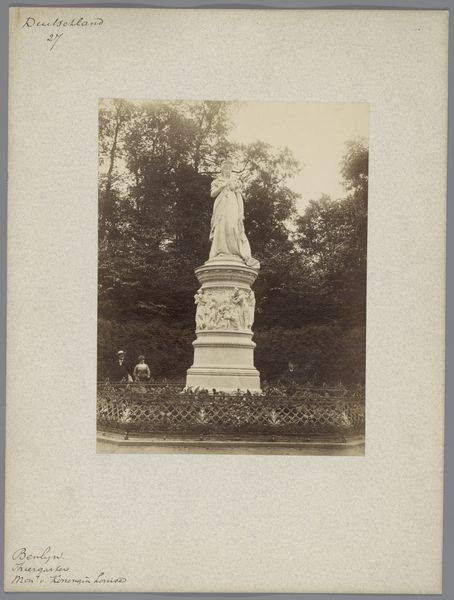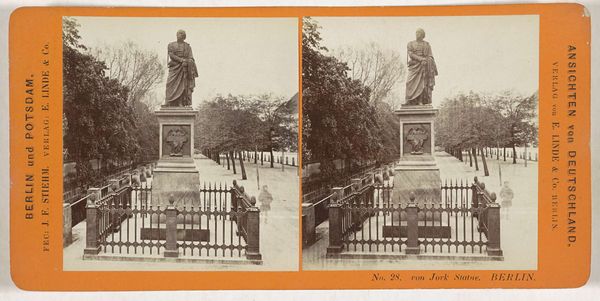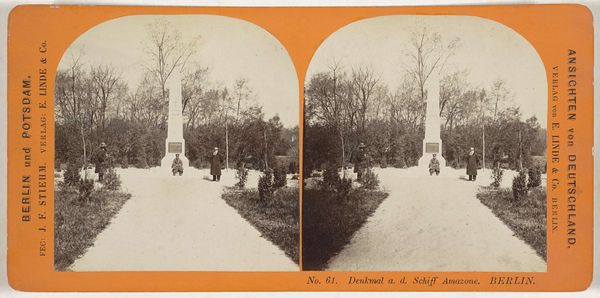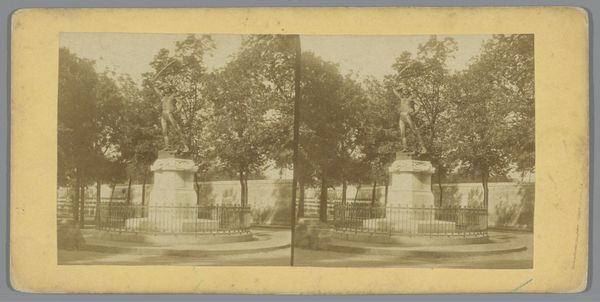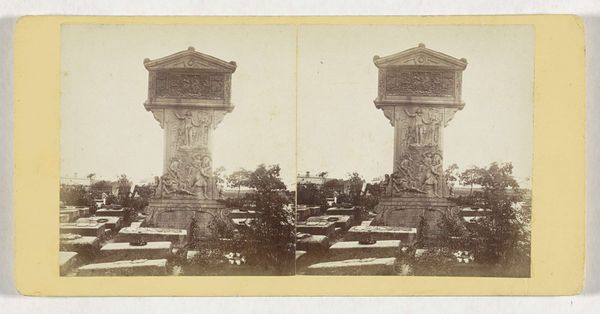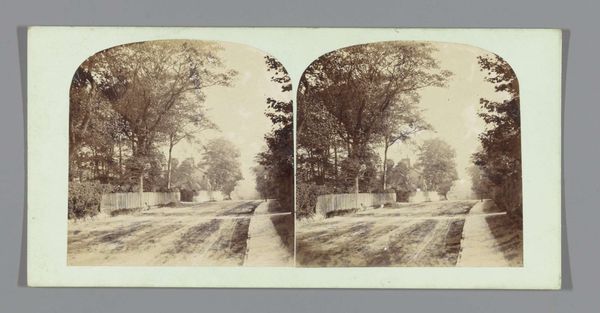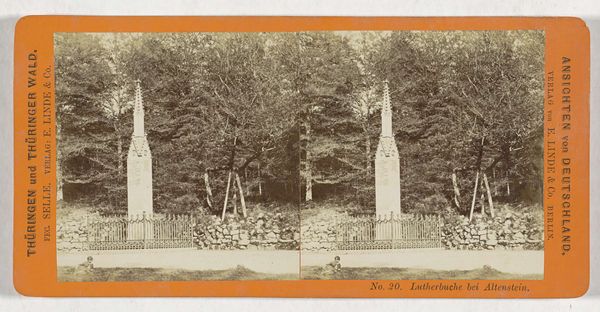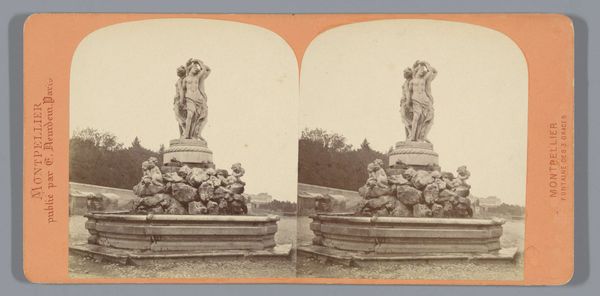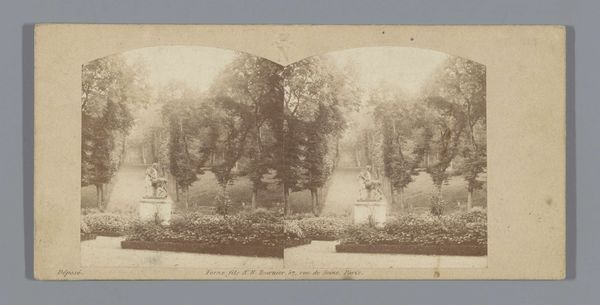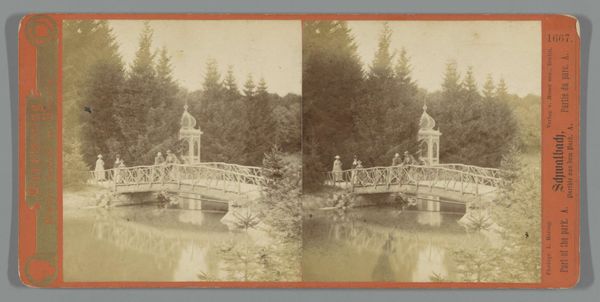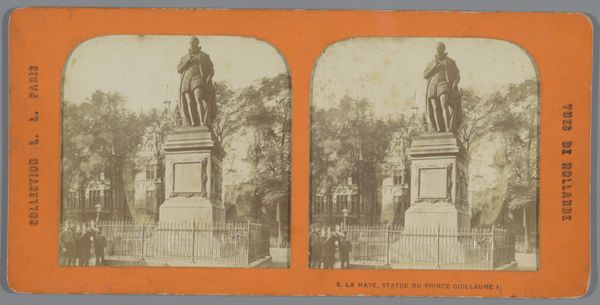
Familiegraf van de familie Von Humboldt bij Schloss Tegel, Berlijn 1868 - 1870
0:00
0:00
print, photography
#
aged paper
#
toned paper
# print
#
landscape
#
photography
Dimensions: height 87 mm, width 177 mm
Copyright: Rijks Museum: Open Domain
Curator: Looking at this sepia-toned print, I'm struck by the stillness and solemnity of the scene. Editor: This is a photograph dating from between 1868 and 1870 by Johann Friedrich Stiehm. Its title translates to "Family grave of the Von Humboldt family at Schloss Tegel, Berlin." What draws you to it immediately? Curator: The strong central column, the gated enclosure. It feels… guarded. Like a space physically and emotionally separate from the surrounding landscape. I wonder about the process – what paper was used, how the image was fixed. It looks like a meticulously crafted albumen print, perhaps? Editor: Absolutely. Stiehm, and the publisher E. Linde & Co., were participating in a wider culture of memorialization and idealization through imagery. Consider the market for these photographs – postcards essentially. They served as records and reminders, but also reinforced certain social hierarchies through controlled representation of places and people of significance. Curator: The framing does a lot. See how Stiehm captured this place, both private family monument, and a piece of cultivated landscape? This print, this material object, makes it tangible, preservable, replicable for distribution. It’s not simply about remembering; it’s about owning that memory in a physical sense. The labour behind producing these landscape photographs is critical. From sourcing materials to taking pictures to print it with consistency and quality, making images and distributing them widely needed dedicated work and workforce. Editor: Exactly! And look at the inscription. “Ruhestätte der Familie von Humboldt in Tegel” directly links this image to a specific historical narrative, that of the renowned Von Humboldt family, and their resting place near Schloss Tegel. It becomes part of a constructed national identity, readily consumed by a public eager to connect with prominent figures and their legacies. The photograph becomes part of that narrative by portraying family burial places. Curator: It really is a complex interplay. For me, that toned paper evokes a sense of both history and loss – it's an evocative medium. Editor: And it reminds us that even seemingly straightforward images are shaped by market forces, institutional frameworks, and a carefully cultivated public memory. It is crucial to read landscape photographs not simply as truthful depictions of nature, but as tools shaping cultural meaning and memory. Curator: This image pulls at multiple threads: the beauty and melancholic landscape in conjunction with industrial mass-production. Quite remarkable.
Comments
No comments
Be the first to comment and join the conversation on the ultimate creative platform.
